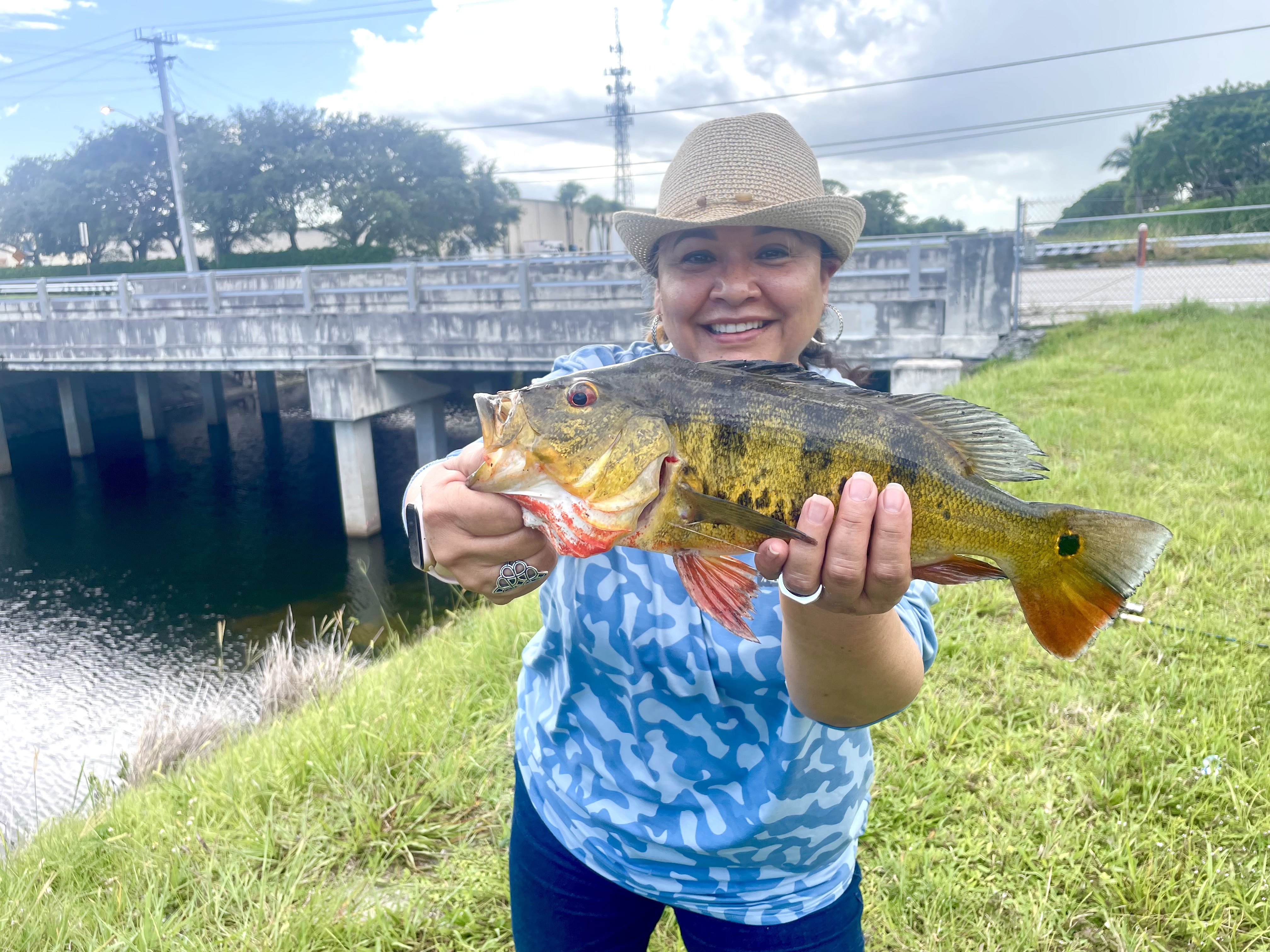
Drop off the main drag and you’ll often find your downtown side streets harboring some of the city’s best hole-in-the-wall diners and eclectic boutiques. Canals hold similar appeal, as they often link one water main body to another, while holding rod-bending opportunities along the way.
You may find these slender, mostly straight conduits stretching a football field in length, while some could run for miles. Because most trace manmade origins, depths and bank styles often remain fairly consistent, but within these easily-accessed water routes, Z-Man pro-staffer and South Florida canal specialist Pat Kohler knows great potential could be just a cast away.
“Where I’m from, canal sizes could be 10 feet wide, 20 feet wide, or 40 feet wide, but even in a 10-foot wide canal, there could be 10-pound largemouth in there,” Kohler said. “As long as there is food for them to eat, it’s not uncommon to catch a (large) fish in a canal that’s 6 feet deep and 10 feet wide.”
(This is particularly relevant during the largemouth spawn, when some of the lake’s biggest fish sneak into quiet, secluded canals to produce the next generation.)
Consider also that smaller canals see far less traffic than open lakes and major rivers. Less fishing pressure generally means reasonably cooperative fish. Moreover, canals usually offer walk-up fishability somewhere along their course, so whether it’s a planned outing or impromptu angling action, canals often reward exploration.

Find ‘Em
You’ll often spot canals as you drive through your area, but Google Earth offers enlightening overhead perspective on a canal’s course, length, origin and conclusion. Look for the access routes, respect private property and request permission where appropriate.
In my home state of Florida, one of my favorite routes is Highway 60, which passes through lots of agricultural lands drained by a network of water control canals. While you can’t wander onto these properties uninvited, long stretches of canals parallel the highway, often with plenty of space for parking.
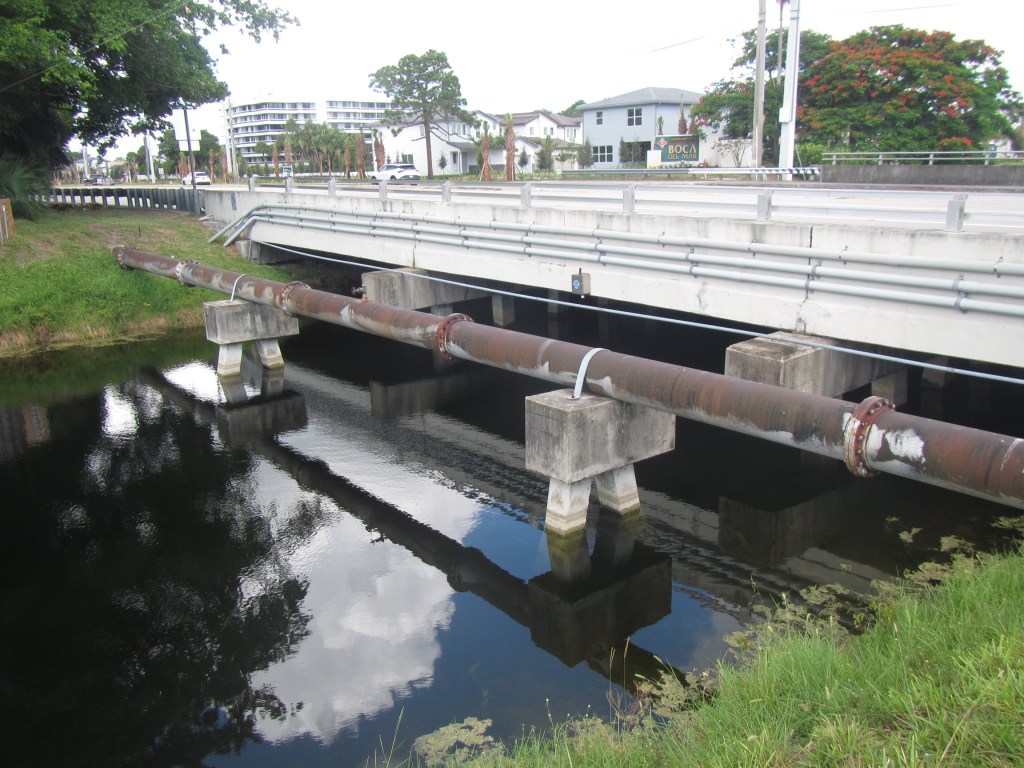
Tip: for safety, park ahead of where you’ll be fishing so you’re clearly visible to oncoming traffic. Stand in front of your vehicle and you’re hidden to oncoming drivers.
Describing his key consideration for canal selection, Kohler said: “Most of the time, you want submersed aquatic vegetation (SAV), because that’s where the nursery is. That’s where all the baitfish grow up. Usually, if you have a lot of vegetation, you have the entire food web, so the canal tends to be healthier.”

Sweet Spots
While you might find fish just about anywhere along a canal, definitive reasons will always explain their presence. The two biggest attractions will be food and cover. The first one’s easy — find small baitfish, crawfish, aquatic insects, etc. and you’ll find fish ready to eat them.
Cover provides shelter from sunshine/heat, warmth in the winter and hiding places — for safety and for ambush feeding. Examples include:
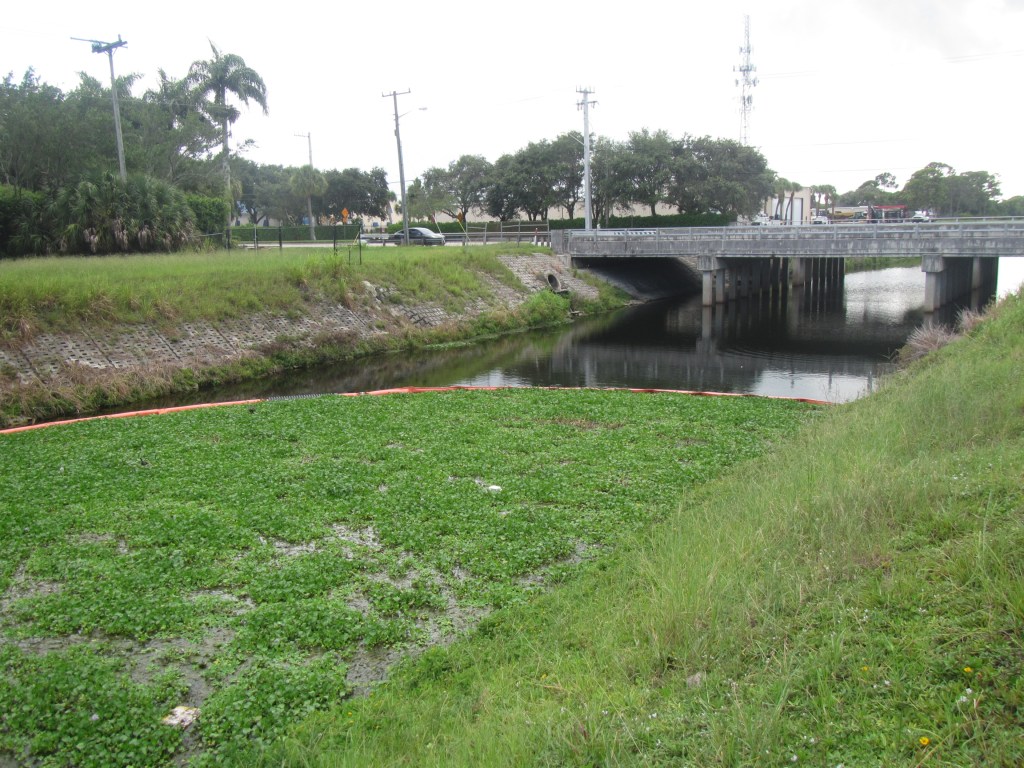
Bridges: From major highways, to small local roads, the mix of shady confines and solid objects (the pilings) will almost always attract fish.
Laydowns/Logs: Trees falling in the water is Fishing 101, so always give such objects a thorough examination.
Drain Pipes/Culverts: Outflows deliver nutrients, food items, and oxygenated water, but they also carve deeper spots that fish will leverage for concealment and ambush feeding.
Turns/Bends: Anytime the canal contour redirects the water, predators will leverage such scenarios to run out and grab forage moving around the bend.

Weed Control: Containment booms used to stop the flow of floating vegetation create boundaries where baitfish gather. Concentrated food sources always attract bigger fish.
Points: Whether it’s a natural feature, such as a limestone protrusion in a Florida canal, or a manmade structure like a riprap corner, you’ll typically find sunny/shady sides, windward/leeward sides, or upcurrent/downcurrent sides. Basically, points offer options.
Flood Control Structures: Assuming lawful access, areas adjacent to the various structures often benefit from current dynamics that keep the environment fresh and stimulate feeding.
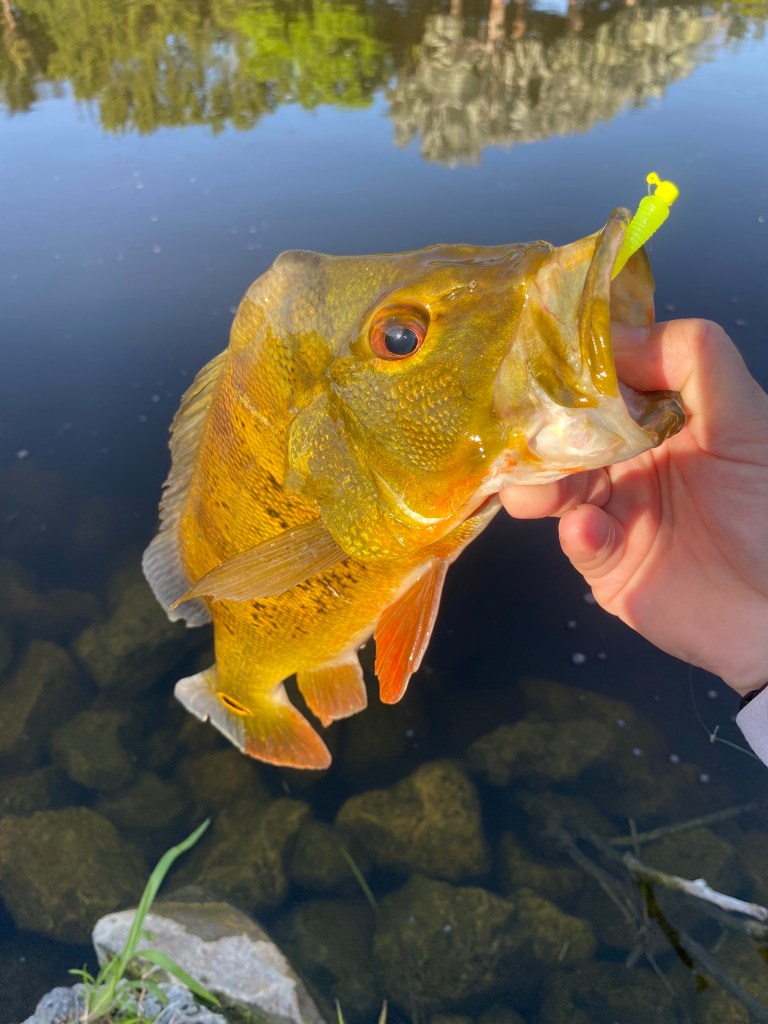
Best Baits
In most southern canals, you can’t go wrong with live earthworms. Buy them at a bait shop or dig your own from moist soil or damp leaf litter and fish half-inch pieces on a No. 8 Aberdeen hook with a split shot under a bobber for panfish, small bass, and the numerous nonnative “exotic” species abounding in South Florida canals (https://myfwc.com/wildlifehabitats/nonnatives/species-not-native-to-florida/).
Tip: If you’ve spotted larger bass or sizable exotics, upsize to a No. 6 or No. 4 hook and run the point just through the tip of the worm. Cast to the target area and slowly swim it back. The undulating form is irresistible.
If you have an aerated bait container or a flow-through bucket that you cat sit in the water (secured with a cord so it doesn’t drift away), live shiners or the locally favored minnow species will tempt a variety of predators. Free lining looks most natural, but a float helps you control the bait’s position, while also offering a strike indicator.
On the artificial side, Kohler likes the broad appeal and diversity of a 3-inch Z-Man SwimmerZ rigged on a 1/8-ounce Z-Man Eye Strike jig head. A beginner-friendly cast-and-reel bait, this lure can be fished at various depths, based on retrieve speed.
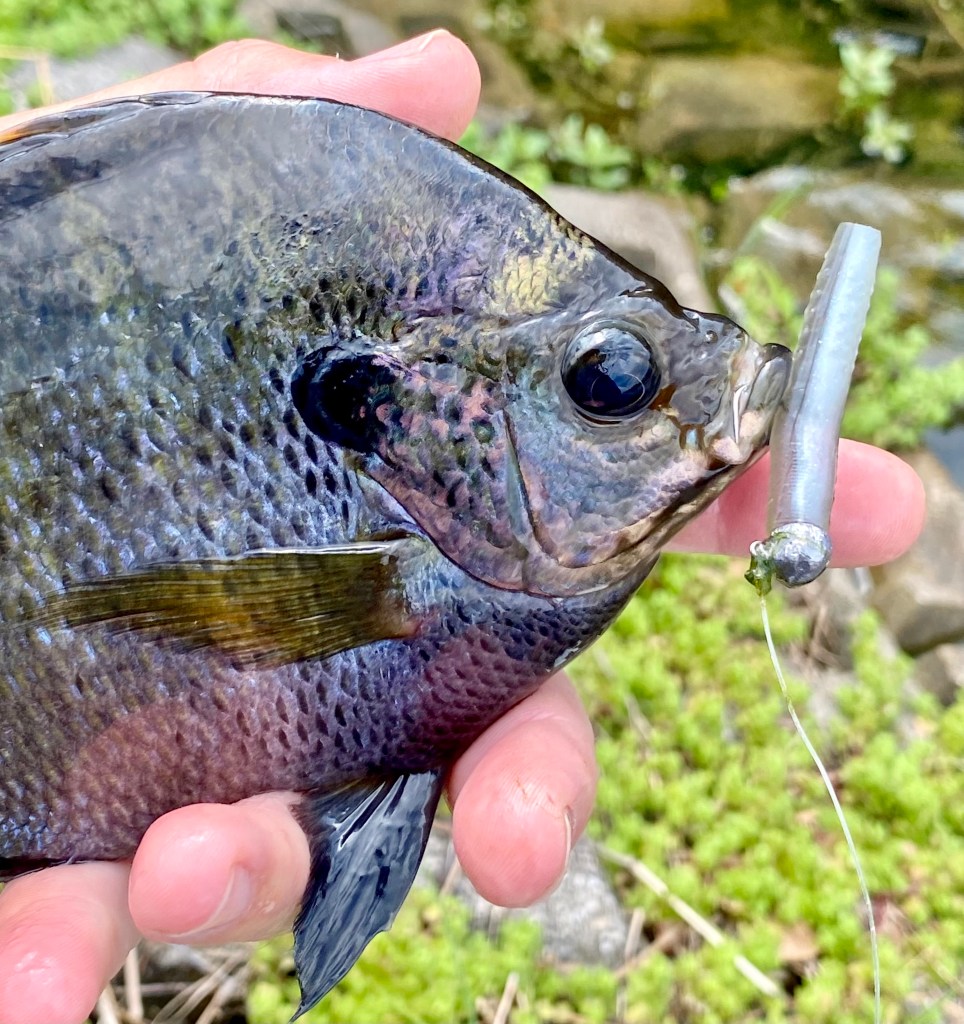
Kohler also does a lot of canal work with Z-Man’s new Micro Finesse line; particularly the GoatZ, Micro TRD, Baby BallerZ on Micro Finesse ShroomZ heads. Another bait of diverse appeal is the Micro WormZ on a ZMan Shad FryZ head. This one, Kohler said, holds widespread appeal
“That’s a good (introductory) bait for beginners because everything eats (small worms),” Kohler said. “With the Micro Finesse line, there’re not super heavy where your cast can go all over the place. Also, because they’re light, it’s good for beginners because the bait doesn’t go to the bottom as fast, so it stays in the water column longer.”
Kohler also likes a weedless rigged 4-inch Senko; a diverse bait he can cast, flip, drag or swim. He’ll round out his arsenal with a Z-Man Chatterbait, a swim jig and a Z-Man Goat ToadZ on a wide gap hook. Other canal-relevant artificials include topwater walkers, jerkbaits/slashbaits, lipless baits, swimming worms, and small spinnerbaits like VMC’s 1/8-ounce Boot Tail or Curl Tail Spinnerbaits.
Stay or Go?”: As with natural lakes and manmade reservoirs, canal anglers must determine if they’ll run and gun to cover as much water as possible, or select a promising site and thoroughly fish it. Kohler said it mostly depends on your fishing style and the area, but he’ll consider a dynamic spot’s opportunity level.

“A spillway or a lock is an area where I could spend some time, because you have flowing water, so there could be multiple points where the fish are,” he said. “But as a general rule, I like to walk and fish different areas.”
As Kohler explains, fish tend to have territories, often coinciding with those “sweet spots.” It’s okay to commit some time to see what the spot can offer, but if you don’t catch anything, or if you catch a few and the bite stops, keep moving.
“I generally like to spot hop, because you’re always getting a fresh batch of fish,” Kohler said. “Usually the more area you cover, the more you’re going to catch.
“I like to fish for fish that are hungry. You can spend a lot of time fishing for fish that aren’t feeding, so I like to fish a little quicker, because the faster you fish, the more area you cover and the more chances you have of encountering fish that will want to eat.”
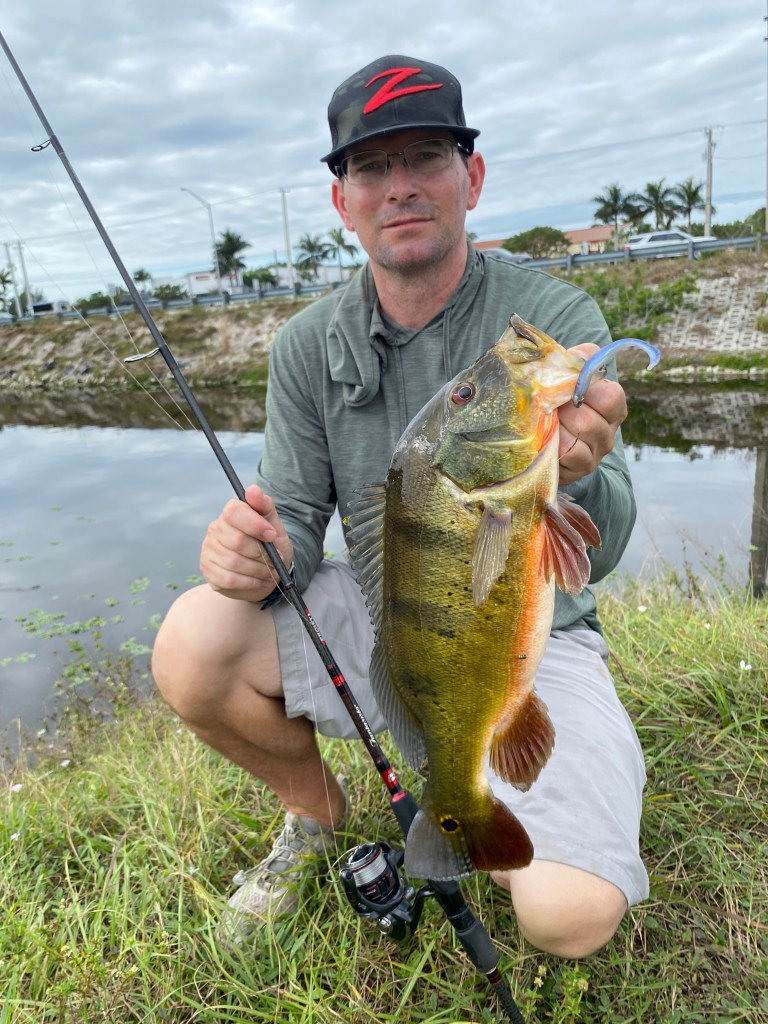
Safety/Comfort
If you plan on hiking along a canal and fishing your way through a significant section, take plenty of liquids, either in a refillable bottle, or a hydration pack, like the one built into AFTCO’s Urban Angler Backpack. You’ll also need sunscreen, insect repellant, a hat, polarized sun glasses and a sun gaiter that keeps your face, neck and ears protected.
Lightweight, long pants will guard your legs from the random weeds and brush common around canal edges. Moreover, water sources gather insects and you really don’t want most of them crawling, flying, or jumping around your legs. Calf length socks, plus a rubber band around your pants cuff further limits intrusion.
Finally, alert observation is your biggest safety tool. Hard to predict where snakes, alligators and other potential hazards might occur, but look down, look ahead and don’t walk where you can’t see your next step. (Fire ant mounds are common waterside hazards.)
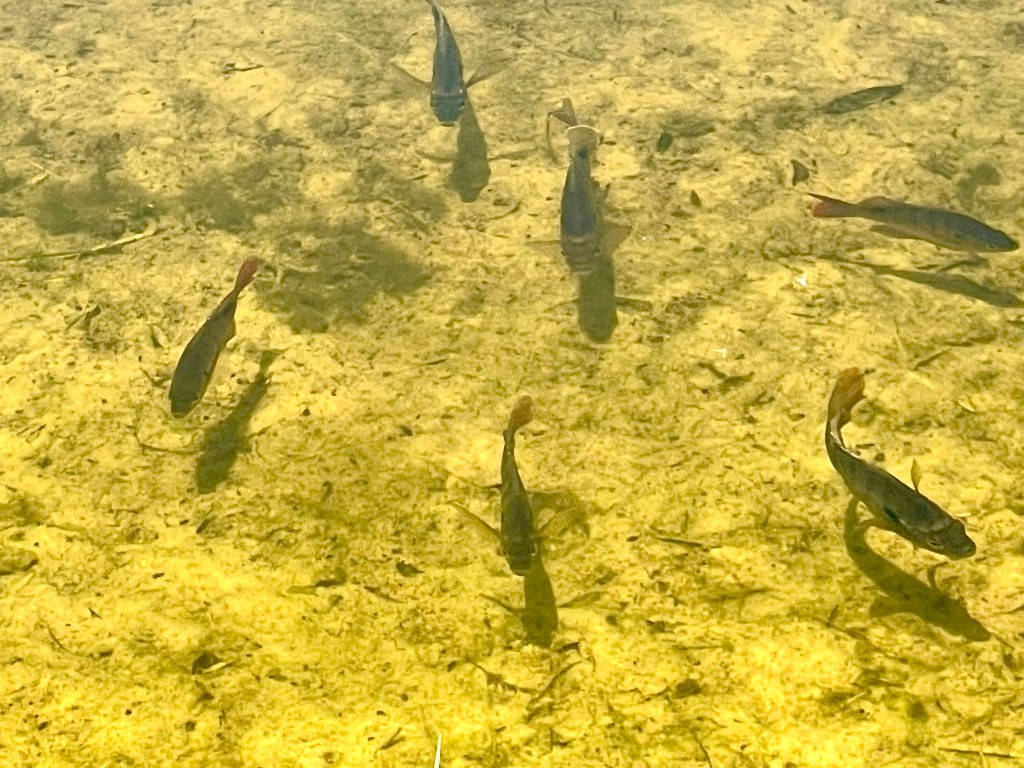
Also, in southern waters, stay away from canal edges where dense cover (hyacinth, pennywort, etc.) crams against the bank. This is prime gator hidin’ stuff. They’re mostly interested in ambushing small game for their next meal, but suddenly meeting 6-plus feet of ill-tempered lizard will rattle anyone’s cage.
Stay safe, focus on your fishing and make the canal connection.




